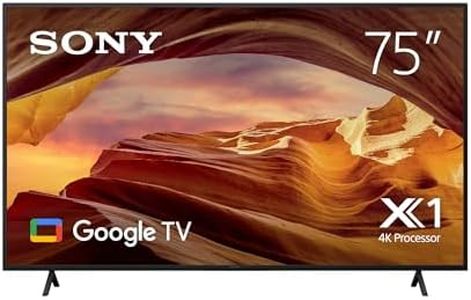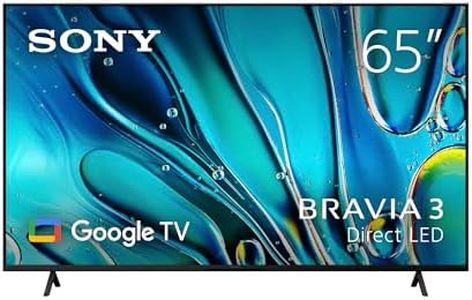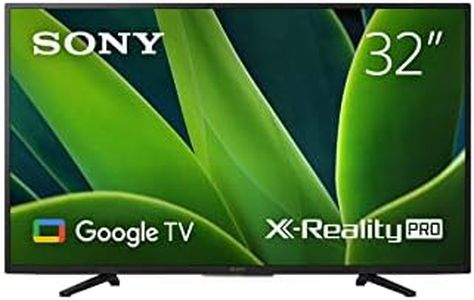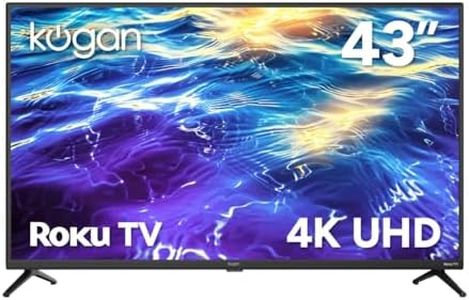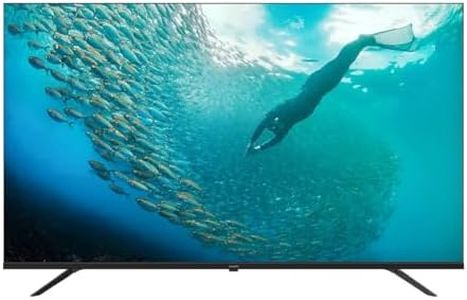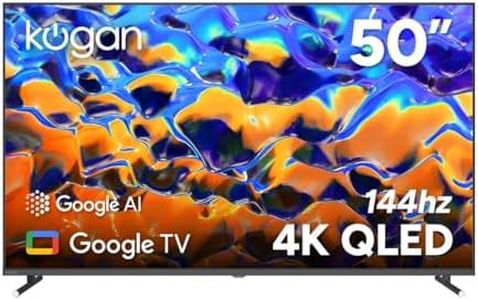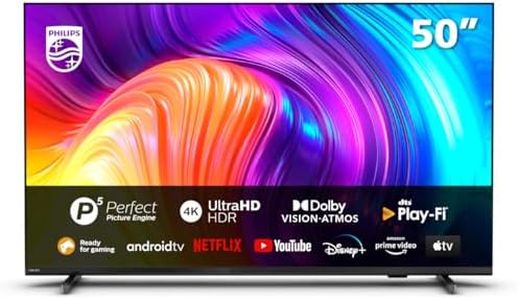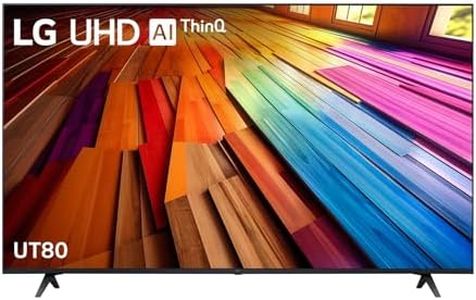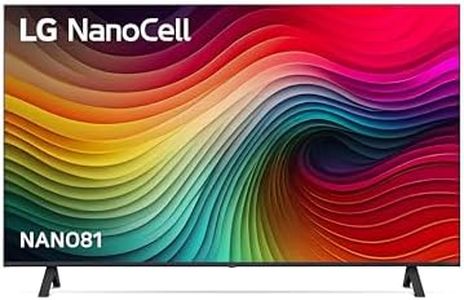We Use CookiesWe use cookies to enhance the security, performance,
functionality and for analytical and promotional activities. By continuing to browse this site you
are agreeing to our privacy policy
10 Best Budget Gaming Tv
From leading brands and best sellers available on the web.By clicking on a link to a third party's website, log data is shared with that third party.
Buying Guide for the Best Budget Gaming Tv
Shopping for a budget gaming TV is all about finding the right balance between performance and affordability. While you might not get every high-end feature, you can still enjoy a great gaming experience by understanding which specifications truly matter for gaming. Focus on the essentials that improve picture quality, responsiveness, and overall enjoyment. Consider your gaming setup, the types of games you play, and the environment where you'll use the TV. Being mindful of the specs will help you choose a TV that makes gaming enjoyable without overspending.Refresh RateThe refresh rate tells you how many times per second the TV updates the displayed image, usually measured in Hertz (Hz). For gaming, a higher refresh rate can make fast action look smoother and more fluid. TVs commonly offer 60Hz or 120Hz. If you mainly play slower-paced or single-player games, 60Hz can be sufficient. However, if you enjoy fast-paced games like shooters or racing games, 120Hz offers a smoother experience. Think about the games you play and whether smooth motion is important to you.
Input LagInput lag is the delay between pressing a button on your controller and seeing the result on the screen. Lower input lag is crucial for responsive gaming, especially in competitive or action games. Most TVs advertise 'Game Mode,' which reduces input lag. Look for TVs with input lag under 20 milliseconds for the best experience, but even under 40 milliseconds can be comfortable for many gamers. Consider how sensitive you are to delay and whether you play games where quick reactions matter.
ResolutionResolution refers to the number of pixels making up the picture on the screen. More pixels mean sharper and clearer images. Most budget gaming TVs are either Full HD (1080p) or 4K (2160p). If you have a next-generation gaming console or gaming PC, or you sit close to the screen, 4K is better for detail. For smaller screens or older consoles, 1080p is usually enough. Choose the resolution that matches your gaming system and your viewing habits.
HDMI Ports and HDMI VersionHDMI ports are where you plug in your gaming consoles and other devices. The number of ports matters if you have multiple devices, so check if the TV has enough for your needs. HDMI version affects features like higher refresh rates and 4K support—HDMI 2.0 handles 4K up to 60Hz, while HDMI 2.1 supports 4K at 120Hz and advanced gaming features. Choose a TV with enough, and the right type of, HDMI ports to match your consoles and needs.
Panel TypeThe panel type affects how the TV looks from different angles and how well it handles motion and color. The most common types are IPS and VA. VA panels usually have better contrast, making games look deeper and more vibrant, while IPS panels have wider viewing angles, helpful if you often watch from the side. Think about your room layout and what matters more to you—contrast or viewing angles—when picking the panel type.
HDR SupportHDR (High Dynamic Range) lets games show brighter highlights and deeper shadows for a more lifelike picture. Not all budget TVs have strong HDR, but even basic support can improve visuals in games that use it. If you play games with HDR features or want the best picture quality, look for a TV that supports at least basic HDR standards like HDR10. Remember that not all HDR is equal, and budget models may not get very bright, but any HDR can enhance your gaming visuals.

